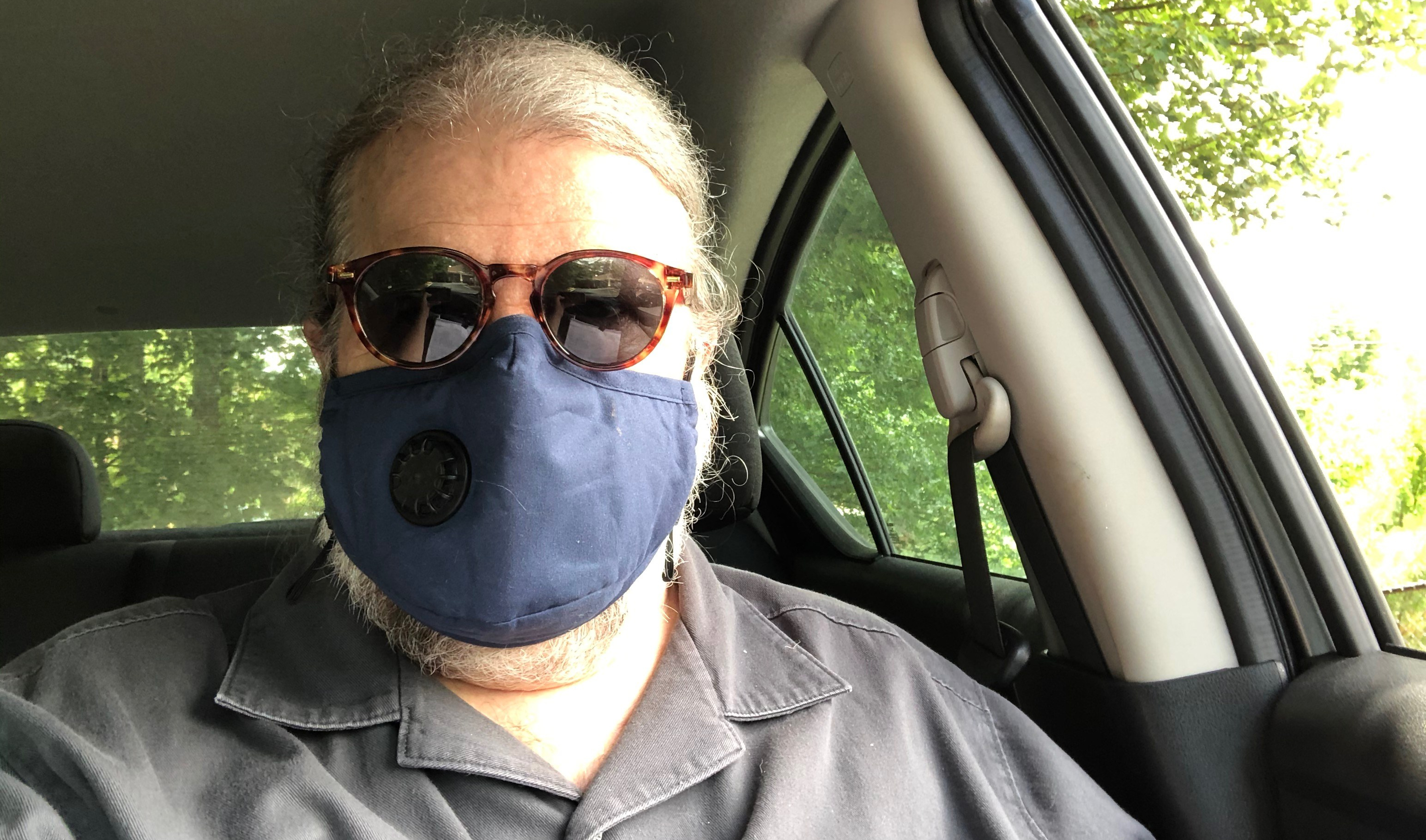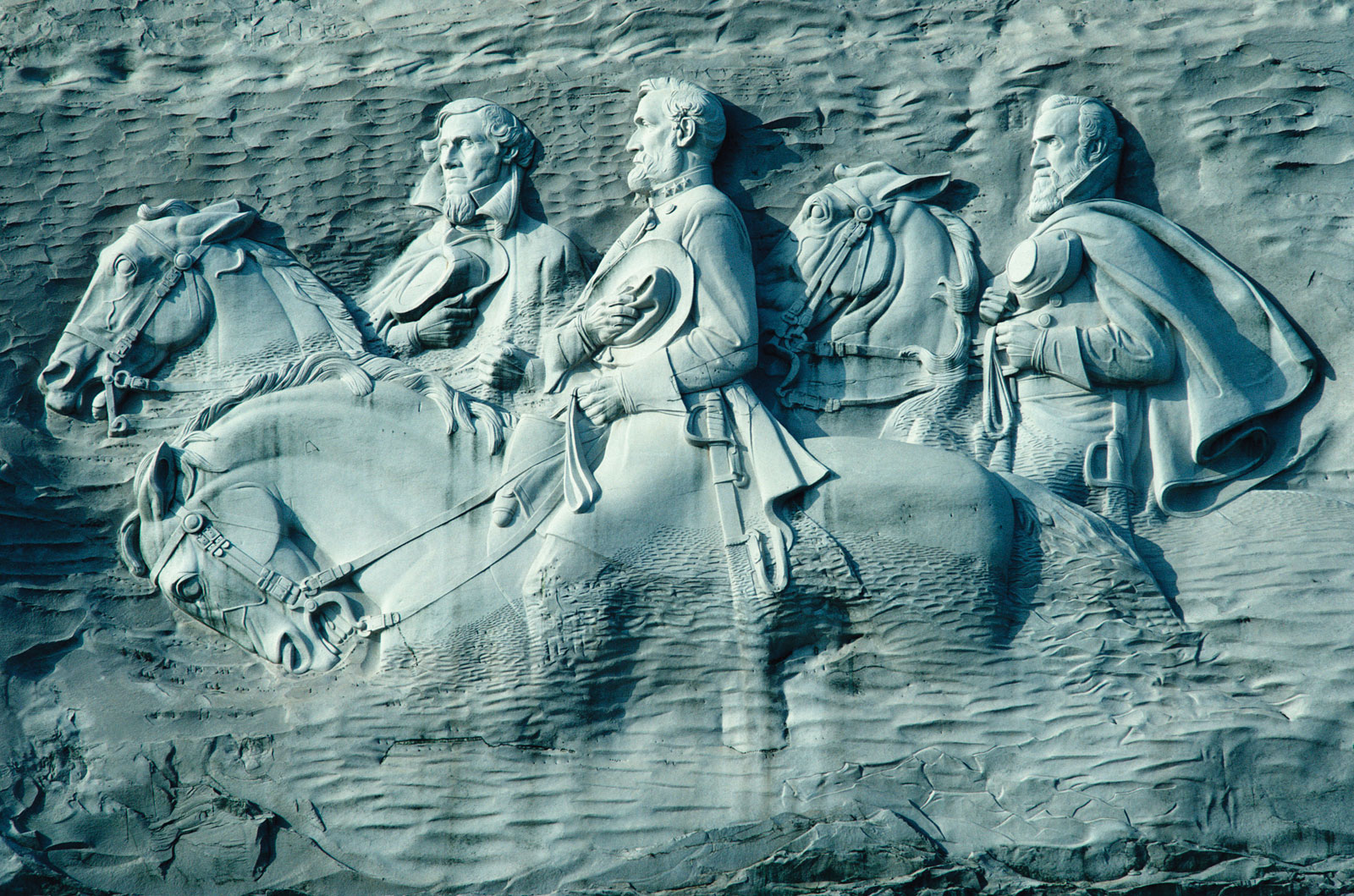 First, I want to start out by addressing the main thing we hear constantly when issues on the Confederate battle flag or Confederate monuments come up, and that is the call for preserving history, or rather the accusation that somehow those who want to get rid of that flag or those monuments are trying to “erase history,” as they say.
First, I want to start out by addressing the main thing we hear constantly when issues on the Confederate battle flag or Confederate monuments come up, and that is the call for preserving history, or rather the accusation that somehow those who want to get rid of that flag or those monuments are trying to “erase history,” as they say.
So, if that is the argument let’s talk about actual history and focus on the real culprits who have tried to erase it. I’ll open by simply saying we all know the real history, which is the South lost that horrible war, and that any objective observer can see plainly that the South was on the wrong side of history. Period. End of story.
This essay is not the old, tired argument of whether the war was about slavery or not. Although any educated person knows the war was absolutely and undeniably about slavery. One doesn’t have to look far for real historical evidence on that. See the Cornerstone Speech or the The Proclamation of Amnesty and Reconstruction issued by Lincoln in 1863, but I won’t go into that here, because for me at least, that’s a closed case.
Aside from the founding of the First Ku Klux Klan in 1865, the next earliest attempts to skew the real history of the war and what it truly represented began a few decades later. In 1894 the United Daughters of the Confederacy was formed. The founding of the UDC was inextricably tied the Lost Cause movement. If you aren’t familiar with Lost Cause it is a pseudo-historical negationist ideology. Think of it as something like “gaslighting” on a mass scale. Most every born and raised white southerner over the age of 40 has been raised in the shadow of the Lost Cause effect, many without really even knowing it.
The primary directive of the Lost Cause movement was to repaint a picture of southern antebellum life as well as the Confederacy itself as a noble cause. More importantly it was designed to glorify and protect the “white cause” as a superior endeavor. So what we are talking about here is the first real effort to bend real history in the favor of the defeated South. Thus, we are talking about the first authentic movement to “erase history” and replace it with a mythology to pass down to generations of white children, one of whom was me.
My great grandmother was a member of the UDC. I actually have copies of her dues receipts. She was a beautiful and kind person, but that is just how normalized this kind of thing was, or even still is in the Deep South. My great grandfather on my dad’s side surrendered to Sherman’s troops in Atlanta on the second day of the Battle of Atlanta. My 3x great grandfather on my mother’s side was Colonel of the Fayetteville Rifle Grays, and his brother was awarded for his service at Gettysburg. Although my father’s family had no great wealth and therefore no slaves, my mother’s side of the family owned one of the largest plantations in Georgia and owned many slaves. So, please understand, I know what being a white southerner in a family that has a strong and proud heritage is like. I grew up with a lot of pride in my heritage, but as a young boy during the Civil Rights Movement I stepped back and took stock in everything that surrounded me. I thank God my mother raised me to reject racism, but that didn’t stop me from being ashamed of being a white southerner for the first 20 years of my adult life.
The main mission of the UDC was to construct monuments to the Confederacy, and positioning those monuments in critical places such as town squares or in front of municipal offices helped to promote their revisionist plan of holding on to the southern ideals Alexander Stephens put forth in his Cornerstone Speech back in 1861. Consequently, probably 99 percent of all the Confederate monuments in existence today were built and funded by them and the Ku Klux Klan. Yes, make no mistake about it, the UDC were closely tied to the KKK. Not casually as some Lost Cause apologists might try to defend.
Let’s look at the history behind the development of the Stone Mountain carving to get a clearer idea on how things worked. The Stone Mountain carving is a troubling issue for me as an artist and a native Atlantan. I grew up watching them actually work on the carving. I can still remember the scaffolding and watching granite fall from the torches as the sculptors cut away on the finishing touches. I was 12 years old when they finally finished and was amazed when the scaffolding came off and I first saw the finished piece.
That makes what I have to write next that much harder to digest. Most of us know bits and pieces of the history and who some of the sculptors were, but let me shine more light on the entire story.
Many of us may already know that the first sculptor was the famous Gutzon Borglum, the man famous for Mount Rushmore. Borglum was also a well known nativist. Something that seems to have made a bit of a comeback today. In the wake of the film “Birth of a Nation” a new surge of racism was born bringing the second wave of the KKK into existence. Amidst that clamor a Mrs. C. Helen Plane, who was a charter member of the UDC approached Borglum to begin talking about a sculpture they wanted on Stone Mountain. In a letter to Borglum Mrs. Pane wrote:
“I feel it is due to the KKK that saved us from Negro domination and carpetbag rule, that it be immortalized on Stone Mountain. Why not represent a small group of them in their nightly uniform approaching in the distance?”
Mrs. Pane then met with Sam Venable, a noted Klansman who also owned Stone Mountain. Thus the work began. However, a few years later Borglum ended his efforts after a dispute with the KKK in March of 1922.
Henry Augustus Lukeman took over, but shortly afterwards the Great Depression stalled the project for a second time. In 1941 Governor Eugene Talmadge formed the Stone Mountain Memorial Association (SMMA) with the intentions of finishing the sculpture, but once again the project was halted by the second World War. Today most of us are aware that Talmadge was a staunch segregationist.
Finally, in 1958 Governor Marvin Griffin urged the Georgia legislature to approve a measure to purchase Stone Mountain and complete the carving. This came as a response to Brown v. Board of Education decision of 1954, as well as the Civil Rights movement itself, which also led the Georgia legislature to add the Confederate battle flag to the state flag in 1956. Finally, in 1972 Walker Hancock completed the carving that we see today.
As of this writing I am personally aware of at least 84 monuments that were built and financed by the UDC. I’m certain there are more, but that’s plenty. In case you have any doubt about their intentions as I mentioned at the beginning of this essay allow me to place here the inscription found on the Confederate memorial in Eastman, Georgia that still stands to this day:
Erected by the Fannie Gordon Chapter United Daughters of the Confederacy, April 1910
No nation rose so pure and WHITE, none ever so spotless. To our Confederate soldiers 1861 – 1865 “The principles for which they fought and lived to those who fought and died.” This stone is erected to keep fresh the memory the noble deeds of these devoted sons. No braver soldiers, no truer patriots ever adorned the history of any nation, they have won their title to immortality of love and reverence. “Nor shall your glory be forgot, while fame her record keeps.”
*Emphasis mine
This is all highly troubling to me. Both because of the lasting impact these efforts had on a mostly unwitting southern society. Perhaps many not as unwitting as I feel, given the rancor and wrath I see flying around in social media today. It’s also troubling because of what I’ve learned about the history of the Stone Mountain carving. I can never look at it the same again since my research on this topic began.
I see many folks posting Confederate flags who are angry at the latest decision by NASCAR to disallow the display of the battle flag at their events. For me that was some of the best news I’ve heard on that subject in a long time. This post I see people sharing has a list of things “explaining” the symbols of the battle flag, using words like the “Blood of Christ” and citing the use of the St. Andrews Cross, among other things. News flash: We actually have real historical records of what the flag designer, William Porcher Miles, actually meant and it has nothing to do with that silly meme. All I have to say to that is give me a break. Anyone can go back and write niceties about any vile symbol after-the-fact. I could take the Nazi flag of the Third Reich and write some prose right now that could make that flag seem like the most Christian and peaceful symbol on earth, so give me a damn break. Of course, revisionist and denialist history seems to be part of their jam, so I guess I shouldn’t be too surprised.
One last thing: BLACK LIVES MATTER
I am no longer ashamed to be who I am today, even if I am stuck in the skin suit of a middle-aged white southern man, and therefore a member of the most privileged class in the most powerful country on earth. Which is why my duty now is to channel my privilege and influence by standing up with my black brothers and sisters, not to lead, but to listen and follow. It is time to stand up and place ourselves on the right side of history. It is time to wipe away the stains that have acted as an illusion to generations of people and go back to trying to form that “More Perfect Union” no matter how imperfect we are. Removing these statues is not erasing history, it is cleaning off the vulgar graffiti that has defaced our country for over a century.
Thank you for your time,
Rick
SOURCES:
- PHOTO: Granite carving of Confederate leaders Jefferson Davis, Robert E. Lee, and Thomas “Stonewall” Jackson, Stone Mountain, Ga. ©Getty Images
- Smith, Rex Allen (1985). The Carving of Mount Rushmore. New York: Abbeville Press. p. 62
- Michael J. Hyde (2004). “The Ethos of Rhetoric”. p. 161. University of South Carolina Press
- McKinney, Debra (Spring 2018). “Stone Mountain. A Monumental Dilemma”. Southern Poverty Law Center Intelligence Report. No. 164. pp. 18–22.
- “The Carving of Stone Mountain”. American Experience TV. Retrieved March 10, 2016
- Stone Mountain collection, 1915-1977. Manuscript Collection No. 95. Stuart A. Rose Manuscript, Archives, and Rare Book Library. Emory University. emory.edu. Retrieved 2017-08-25.
- Stewart, Bruce E. (2004). “Stone Mountain”
- McKinney, Debra (Spring 2018). “Stone Mountain. A Monumental Dilemma”
- Freeman, David B. (1997). Carved in Stone : The History of Stone Mountain. Mercer University Press
- Coski, John. The Confederate Battle Flag: America’s Most Embattled Emblem. Cambridge: Belknap Press, 2005. ISBN 978-0674017221.
- Segal, Corinne. “What the Confederate Flag’s Design Says About Its Legacy.” PBS Newshour. 10 July 2015.


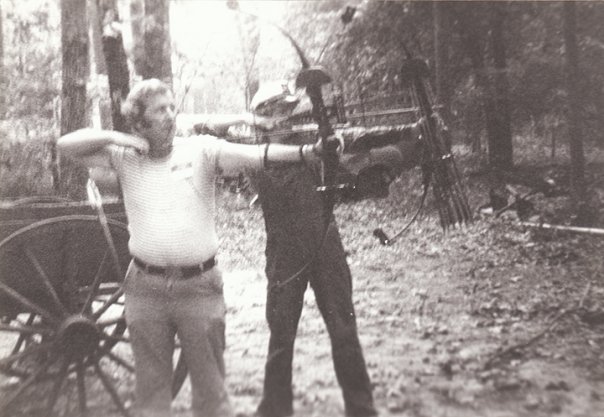


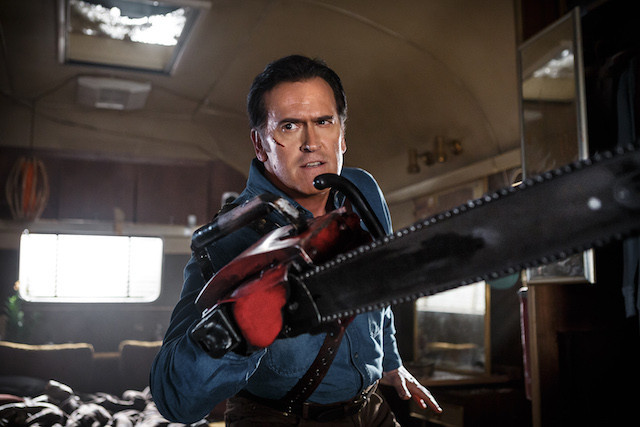
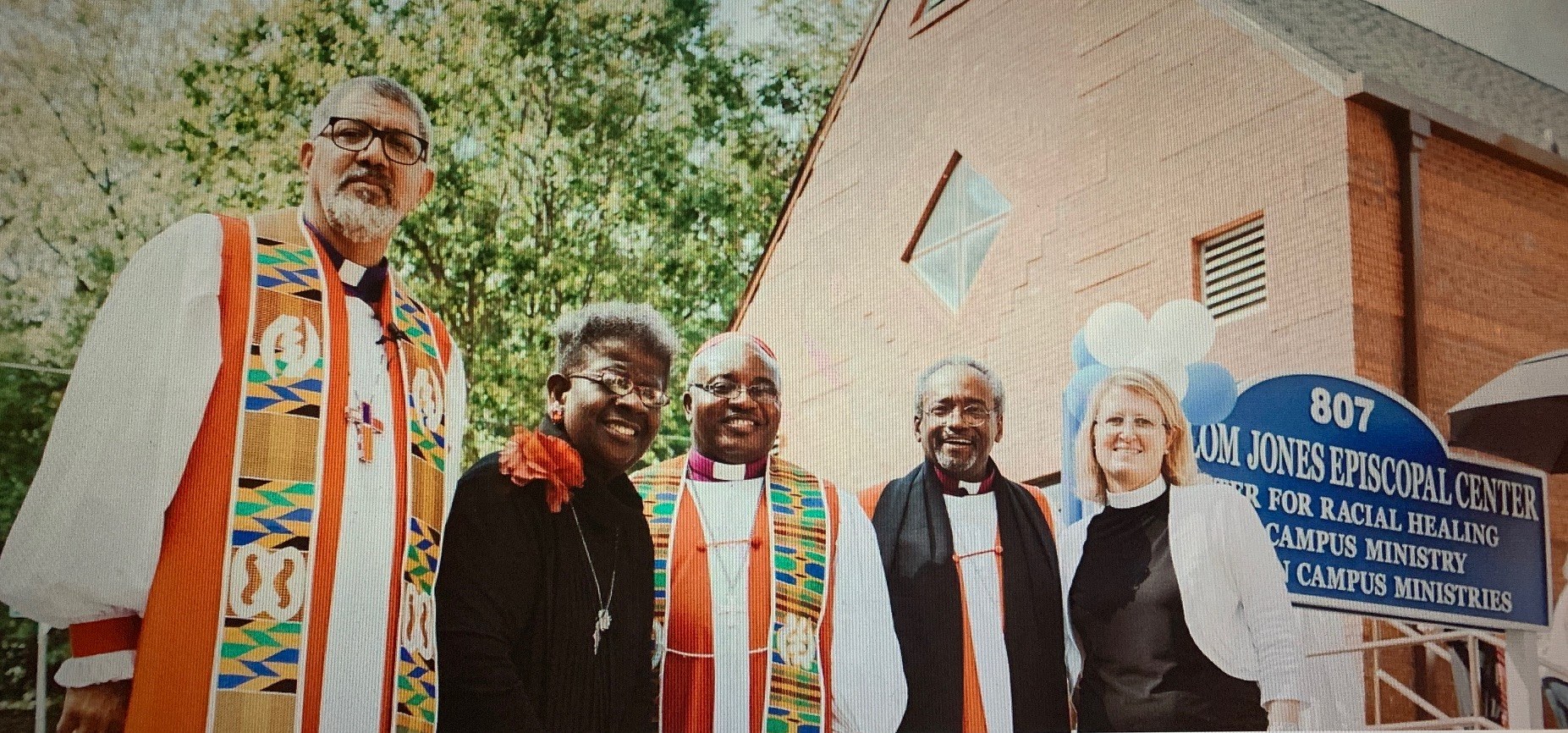

 First, I want to start out by addressing the main thing we hear constantly when issues on the Confederate battle flag or Confederate monuments come up, and that is the call for preserving history, or rather the accusation that somehow those who want to get rid of that flag or those monuments are trying to “erase history,” as they say.
First, I want to start out by addressing the main thing we hear constantly when issues on the Confederate battle flag or Confederate monuments come up, and that is the call for preserving history, or rather the accusation that somehow those who want to get rid of that flag or those monuments are trying to “erase history,” as they say.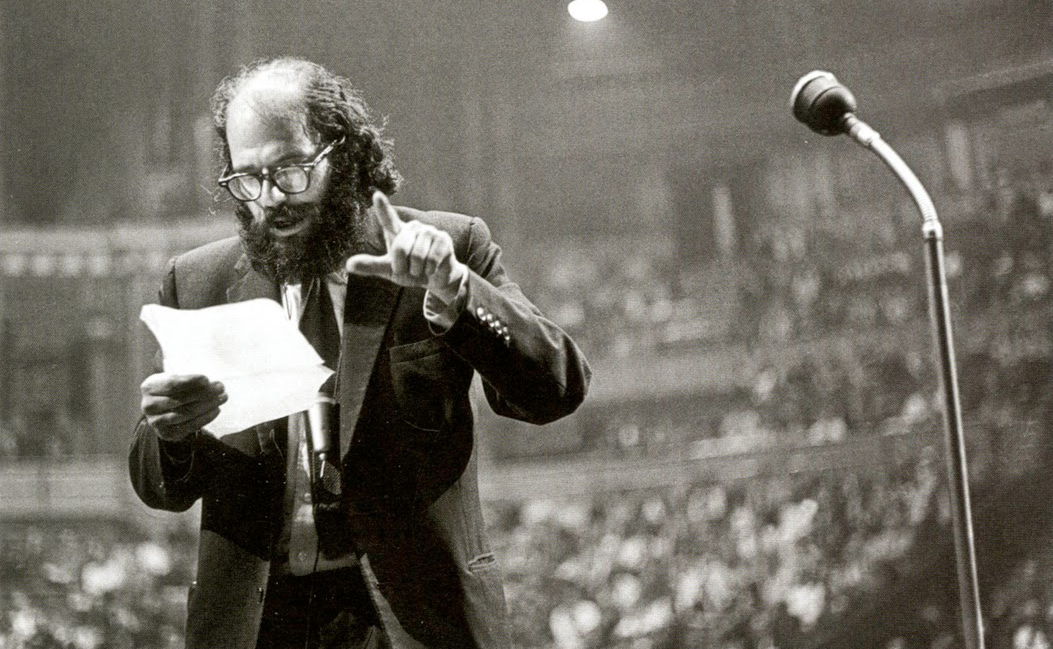 Why Rap Matters
Why Rap Matters